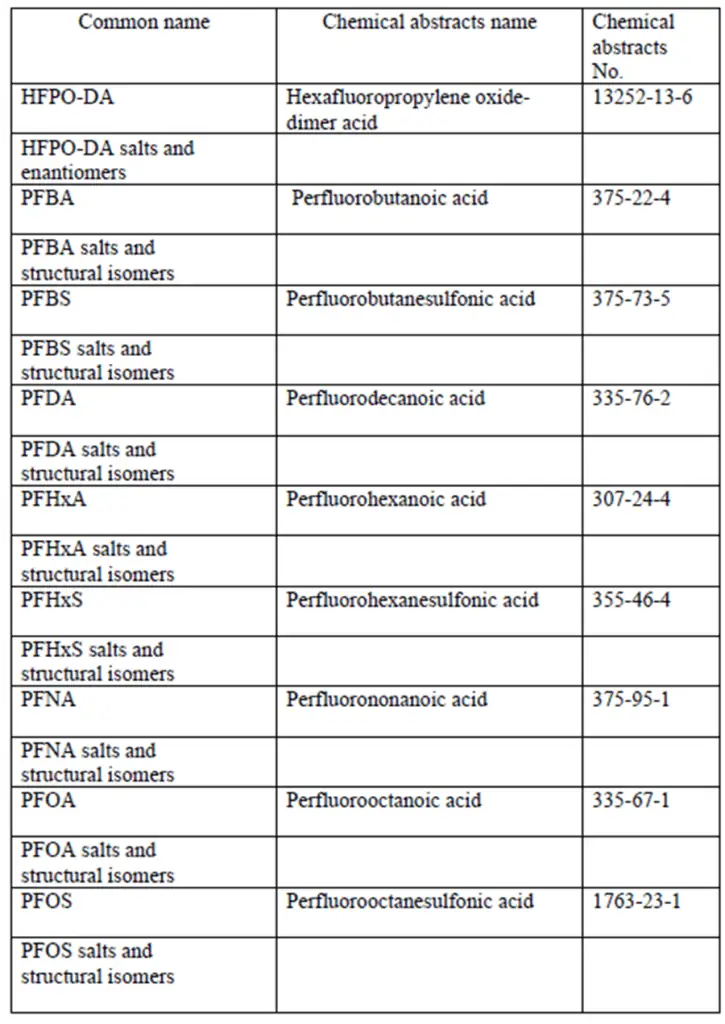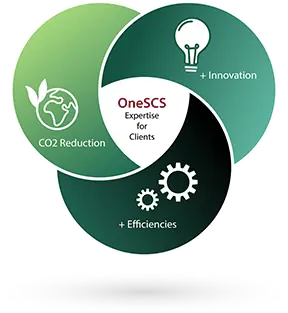

When it comes to running your facility, there are many things you are constantly considering and managing. The list can seem never-ending, from worker safety to product supply chain and staying staffed. The last thing you want is a surprise visit from your local, state, or federal regulator that goes badly. Here are five things to look for to avoid unpleasant surprises to ensure your aboveground storage tanks (ASTs) are inspection-ready.
Make sure that your AST secondary containment is empty. The secondary containment design is to prevent spills and leaks from reaching the environment, so the containment should be emptied after each rain, once the contents are verified to be only stormwater and free of sheen. Also, regular cleaning of the secondary containment of algae and debris build-up avoids potential issues during inspections.
A locked containment drain valve is essential to demonstrate compliance with your visiting regulator. The locked valve will prevent any unauthorized connections, which can lead to potential environmental hazards. For instance, during my time at the Arkansas Department of Environmental Quality, a facility was fined because an untrained maintenance technician had drained an overflowing paint tank to a nearby stream via a garden hose connected to the secondary containment valve. By locking your containment drain valve, you mitigate risks and show your commitment to environmental safety.
Ensure you update staff on spill response training. Proper training is key to handling spills efficiently and safely. By providing your employees with the necessary knowledge and skills, you can create a proactive culture of environmental responsibility within your organization.
Have a fully stocked spill kit next to your tank and other likely spill points. Accidents happen, and it is crucial to be prepared with the proper supplies for potential spills. Having a spill kit ready and available can help you respond quickly and effectively, minimizing any environmental impact. Your SPCC Plan should include a list of spill kit locations, the contents of each spill kit, and a schedule for inspection of these kits. Following your SPCC Plan’s inspection schedule and forms will help you check and replenish the spill kit to ensure they are always ready for you when needed.
Check that your AST safety features are in good working order. Your tanks should have functioning fill gauges and alarms. These devices are essential for monitoring the contents’ level and preventing overfilling, which can lead to spills and other hazardous situations. Another crucial aspect to consider is the functioning of the emergency vent. Common issues with emergency vents include manway bolts that are secured too tightly without any slack, painted-over vents, or busted heat latches that can allow water to enter.
Regularly inspect and maintain all of these to ensure their proper functioning – they play vital roles in preventing spills and other potential tank failures. Remember to keep a copy of all your inspection forms to show your visiting regulator – it gives agencies confidence in your ability to protect the environment.
______________________
Being prepared for tank inspections is essential for any facility managing ASTs. Following the recommendations above demonstrates your commitment to worker and community safety, product supply chain integrity, and environmental responsibility.
Additional Resources:

About the Author: Benjamin Reynolds is a Senior Project Professional in our Little Rock, Arkansas, office. He is experienced in Spill Prevention, Control, and Countermeasures (SPCC) Plans, Tank Assessments, Storm Water Pollution Prevention Plans (SWPPPs), and Phase I and Phase II Environmental Site Assessments. He is a Professional Engineer licensed in Arkansas, Oklahoma, Tennessee, and Florida.
Reach out to Ben at or on LinkedIn.
In response to its PFAS Strategic Roadmap, the Environmental Protection Agency (EPA) initiated two regulatory actions under the Resource Conservation and Recovery Act (RCRA) to tackle PFAS pollution. Once implemented, these measures will empower federal and state agencies with advanced tools for PFAS remediation.
The initial proposed regulation intends to designate specific PFAS as “hazardous constituents” within RCRA’s framework, making them subject to detailed scrutiny and cleanup actions at sites handling hazardous waste.
The second proposed rule aims to affirm that new contaminants, including certain PFAS that are not currently classified as “hazardous wastes” yet align with the definition of “hazardous waste” in RCRA section 1004(5), should be managed equivalently to traditional hazardous wastes in the context of corrective actions. Listing these PFAS as RCRA hazardous constituents does not make them, or the wastes containing them, RCRA hazardous wastes.

On February 8, 2024, the EPA proposed to add nine PFAS compounds to the list of “hazardous constituents” to be considered “in RCRA facility assessments and, where necessary, further investigation and cleanup through the RCRA corrective action process.” Appendix VIII to Part 261 – Hazardous Constituents shown at right.
If finalized, this hazardous constituent listing would form part of the basis for any future action the EPA may take to list these substances as hazardous waste.
EPA’s criteria for listing substances as hazardous constituents under RCRA require that they have been shown in scientific studies to have toxic, carcinogenic, mutagenic, or teratogenic effects on humans or other life forms.
Entities potentially affected by the proposed rule include hazardous waste treatment, storage, and disposal facilities (TSDFs) with solid waste management units (SWMUs) that have released or could release any of the PFAS proposed to be listed as RCRA hazardous constituents. EPA has identified 1,740 such facilities, which could be subject to additional corrective action requirements. “Waste Management and Remediation Services” had the highest number of facilities (359) with a high likelihood of handling PFAS.
The primary goal of the suggested amendment is to update 40 CFR 264.101 so that it accurately mirrors the requirements for corrective action cleanups at hazardous waste Treatment, Storage, and Disposal Facilities (TSDFs) as specified by RCRA sections 3004(u) and (v). The modifications are designed to clarify that the management of hazardous waste releases, including those not categorized as hazardous under current regulations but fitting the broader definition in RCRA section 1004(5), should adhere to the established protocols for hazardous waste under the corrective action program. Focusing on Per- and Polyfluoroalkyl Substances (PFAS), this regulatory action is a crucial part of the EPA’s PFAS Strategic Roadmap.
Should this proposed regulation be adopted, it would mean that PFAS would be specifically included as hazardous constituents to be considered during facility assessments and, where necessary, further investigation and cleanup under the RCRA corrective action process at hazardous waste TSDFs.
The proposed regulation states that “solid waste disposal facilities, such as those for municipal waste or construction and demolition debris, would not be subject to RCRA corrective action requirements unless they also function as hazardous waste TSDFs.”
Subtitle D of RCRA covers non-hazardous solid waste management, including municipal solid waste landfills, which are subject to different regulations than hazardous waste facilities (regulated under Subtitle C).
Although the recent proposal by the EPA to revise RCRA does not aim at mandating corrective actions at municipal solid waste (MSW) landfills, it sets the stage for probable future amendments under Subtitle C that might classify certain PFAS-containing waste streams, currently considered non-hazardous, as hazardous waste (e.g., listed or characteristic wastes).
While it is premature to predict the impact of future hazardous waste regulations on MSW landfills, it is appropriate to begin collecting information on PFAS waste and assessing potential effects now. Landfills that have implemented special waste review programs (for example, for non-hazardous industrial wastes like wastewater treatment sludge) are advised to expand their waste characterization efforts within these programs to include requests for data on the presence and concentration of the nine PFAS constituents highlighted in the proposed RCRA rule. Additionally, landfills without such review programs are encouraged to consider establishing them.
Additional Resources/Legislation:
About the Authors: Connect with our authors and experts at
 Jeff Marshall, PE, is a Vice President of SCS Engineers, Environmental Services Practice Leader for SCS offices in the Mid-Atlantic region, and our National Expert on Emerging Contaminants and Innovative Technologies. His four decades of experience include a diversified project engineering and management background, emphasizing environmental chemistry, hazardous materials, waste, and human health risk issues. Focus areas include environmental permitting, regulatory compliance, and hazardous materials treatment and remediation. He is a licensed professional engineer in Virginia, Maryland, West Virginia, North Carolina, and South Carolina.
Jeff Marshall, PE, is a Vice President of SCS Engineers, Environmental Services Practice Leader for SCS offices in the Mid-Atlantic region, and our National Expert on Emerging Contaminants and Innovative Technologies. His four decades of experience include a diversified project engineering and management background, emphasizing environmental chemistry, hazardous materials, waste, and human health risk issues. Focus areas include environmental permitting, regulatory compliance, and hazardous materials treatment and remediation. He is a licensed professional engineer in Virginia, Maryland, West Virginia, North Carolina, and South Carolina.
Thirty years ago this week, on February 11, 1994, then-President Bill Clinton signed Executive Order 12898, Federal Actions To Address Environmental Justice In Minority Populations and Low-Income Populations. The Executive Order marked the first government action on environmental justice and an important part of the environmental justice movement.
Executive Order 12898 directed government agencies (particularly the US Environmental Protection Agency or EPA) to develop plans and strategies to help address any disproportionally high and adverse human health or environmental effects of their programs on minority and low-income populations.
Redlining
Executive Order 12898 responded to changes that began during the Civil Rights Movement. Minority groups, particularly African Americans, began to object to discriminatory practices long entrenched in government policy. The most notable being the practice of “redlining.” In the 1930s, the United States worked to end the Great Depression. To encourage banks to lend money for mortgages, the federal government began insuring or underwriting housing loans; however, government inspectors designated African American and immigrant neighborhoods uninsurable, and the residents could not obtain loans. Landlords were not vested in maintaining their properties, and much of the housing became sub-standard. Inexpensive swaths of property inside city limits encouraged businesses and industry to purchase and develop this land, increasing pollution from traffic, industrial processes, and edging out small businesses.
Solid Waste Disposal
In 1979, Texas Southern University sociologist Robert D Bullard, Ph.D., studied solid waste disposal sites in Houston, Texas, for a class-action lawsuit seeking to prevent the siting of a new landfill near the Northwood Manner subdivision, a Black, middle-class neighborhood. Dr. Bullard’s work found that five out of five city-owned landfills and six of the eight city-owned incinerators were in Black neighborhoods. While the case was lost, it increased awareness of environmental issues in minority communities.
Hazardous Waste
In 1982, North Carolina sited a toxic waste landfill in Afton, a rural Black community in Warren County, to hold 40,000 cubic tons of polychlorinated biphenyls from illegally dumped contaminated soil along state roads and highways. For six weeks, residents and activists protested, marking what many consider the birth of the Environmental Justice Movement. The contaminated soil ultimately went into the landfill and eventually caused a release that cost the state $18 million to clean up.
In subsequent years, the movement began to attract the attention of public officials. In 1983, the US General Accounting Office Study released the location of Hazardous Waste Landfills. It took another seven years before the federal government began to consider policy change when, in 1990, the Environmental Equity Workgroup was formed to gather information and make recommendations to the government, leading to the creation of EO 12898.
Gaining Traction
Throughout the 2010s, the EPA published a series of plans and guidance documents, including the public release of EJScreen in 2014, the Technical Guidance for Assessing Environmental Justice in Regulatory Analysis, and the Environmental Justice Research Roadmap in 2016.
In 2022, EPA Administrator Michael Regan traveled to Warren County, North Carolina, to officially create the new Office of Environmental Justice and External Civil Rights. Several people involved in the 1982 PCB protests were in attendance.
Today’s Protections
State and federal environmental permitting now requires Environmental Justice (EJ) reviews. Fortunately, most, if not all, of the necessary EJ review data is publicly available online. For example, environmental professionals use EPA’s EJScreen regularly for EJ reviews, and many states have developed or are developing interactive data tools.
In the past decade, the US Census Bureau developed a searchable, interactive online database, and in 2021, the US Council of Environmental Quality released the Climate and Economic Justice Screening Tool. Other online data sources include the Centers for Disease Control and Prevention, the US Department of the Interior Bureau of Indian Affairs, and individual state, county, and tribal organizations. These data not only allow us to meet permitting requirements and identify community challenges but also help guide outreach and facilitate communication with stakeholders.
On April 21, 2023, President Biden signed Executive Order 14096, Revitalizing Our Nation’s Commitment to Environmental Justice for All, expanding upon the direction and intent of EO 12898. Thirty years on, we can see the effects of EO 12898 on incorporating environmental justice into environmental policy so that all people can have a healthier, safer, greener place to live, work, and play.

These sites often provide excellent locations with existing infrastructure and transportation but with the need to clean the soil or, in some cases, mitigate other potential health risks to emerge as excellent opportunities for economic revitalization efforts and for creating green spaces.
Hear from SCS Engineers experts at the SWANA Northwest Regional Symposium on May 1 – 3, at the McMenamins Edgefield in Troutdale, Oregon. SCS is a sponsor of the symposium and will have a booth! Come by to talk with our experts!
The program theme this year is Innovation: Shaping the Future of Materials Management, envisioning a future that promotes innovative practices for materials management. The event is planning to host the usual Wednesday evening social and golf tournament as in previous years. The Thursday night social event will be Wild Bill’s Casino Night.
The symposium attracts a large number of professionals and operators, representing public and private sector organizations from throughout the Pacific Northwest. It includes a mix of interesting presentations on important industry topics and fun events for relaxing and socializing. It also provides an excellent opportunity for vendors to exhibit their businesses and interact with potential clients.
Click here for schedule, registration, and other conference details.
SCS Engineers Receives Four Environmental Business Achievement Awards
The Environmental Business Journal (EBJ) is an independent business research publication that provides strategic market intelligence to the environmental industry. EBJ is honoring SCS Engineers with four 2023 Business Achievement Awards.
“In a year of strong growth and financial performance for the environmental industry in 2023, a number of companies set themselves apart with performance, transactions, or projects that merit special recognition,” said Grant Ferrier, editor of Environmental Business Journal and chair of the EBJ Business Achievement Award selection committee.
SCS Engineers and our client will accept awards at the awards banquet at Environmental Industry Summit XXII on April 02-04, 2024, in San Diego, along with Business Achievement and Lifetime Achievement awardees.
Lifetime Achievement Award to James Walsh, SCS Board of Directors Chair

San Gabriel Valley Food Recovery
The San Gabriel Valley Council of Governments (SGVCOG) retained the services of SCS Engineers to assist their member cities in compliance with state mandates regarding edible food recovery and food waste prevention. Implementing commercial food recovery programs is important to ensure members meet state compliance, avoid penalty fees, and reap the environmental and humanitarian benefits, such as addressing food insecurity.
SCS collaborated with the SGVCOG team and local stakeholders to analyze commercial edible food generation, calculate edible food recovery capacity in the region, develop safe food recovery/donation strategies, and create and implement education and outreach to establish one of the largest SB 1383 edible food recovery programs in California.
The combined effort has helped the SGVCOG better understand how and where food waste is generated within its communities and identify the capacities of food recovery organizations to recover excess edible food from businesses. The program has conducted inspections at over 500 businesses and recovery organizations to educate them on food waste reduction and edible food recovery. The program’s results are impressive.
EBJ Sustainable Solution Planning
Sustainability is the new imperative for public and private sectors to diligently establish sustainability initiatives and plans to meet their goals. Planning is the logical starting point, but planners often lack experience in designing and implementing environmental solutions. This oversight leads to less-than-desirable results against goals.
While others focus on identifying overarching goals related to NetZero or Climate Change, SCS partners with clients, preparing detailed plans and project execution to advance sustainability initiatives that scale. SCS Engineers has produced built projects and programs for over five decades that lower industrial operating costs and reduce greenhouse gases.
Integrating sustainability into the core business strategy ensures long-term viability. Selecting a company that’s engineered, constructed, operated, and monitored sustainable solutions helps ensure individual and holistic sustainable plans that scale based on funding and accommodate evolving technologies, market conditions, and regulatory requirements.
SCS’s sustainable solutions planners’ team with our diverse environmental engineers, scientists, and technicians, including our greenhouse gas monitoring and carbon sequestration practices. Our professional staff are located according to their knowledge of regional and local geography, regulatory policies, and industrial or scientific specialties. Full service by these experts provides added value and quality for our clients so that every project successfully achieves NetZero or Climate Change plan goals.
EBJ Large Company Business Achievement
Winners are awarded based on growth, achievements in profitability, major new project wins, staff hires, and new clients. SCS Engineers has grown steadily for decades and celebrated its 53rd anniversary in 2023. SCS Engineers’ core capabilities are solid and hazardous waste management, renewable energy, land remediation, and environmental compliance. With over 1,200 employee-owners, the firm’s scientists, engineers, and consultants produce technologies and create sustainable programs that help run industrial operations and essential public services more efficiently while reducing and verifying greenhouse gases and environmental impacts. In addition, the firm’s technology and sustainability programs for solid waste management support sustainable environmental solutions in the agricultural, industrial, and manufacturing sectors.
SCS employee-owners have a reputation for philanthropy in the communities they serve and generous donations during the holidays or when tragedy strikes.
SCS wins accolades by functioning across practices and geographical regions — with communications between those in the field, offices, and practices. It takes every SCSer to make this happen.
SCS Engineers is an exhibitor of the SWANA- Georgia Chapter 2024 Spring Conference at the Brasstown Valley Resort & Spa in Young Harris, GA, March 18 – 20.
The conference will have informative technical sessions with continuing education opportunities, a vendor trade show, a golf tournament, a fun run, a trail maintenance service project, a Young Professionals axe throwing event, a Membership Networking Event, a clay shooting event (“Buzzard Shoot”) and a Casino Night reception for all to enjoy.
Click here for schedule, registration, and other conference details. See you there!
Join SCS Engineers for the 20th Annual Yuma Area Ammonia Safety Day in Yuma, AZ on February 22.
The purpose of the Yuma Area Ammonia Safety Day is to provide individuals with the opportunity to receive information and training from agencies and safety professionals; to network with professionals who are experts in their fields; and to develop relationships with vendors and others from the entire arena of the ammonia industry. Topics this year include:
Click here for schedule, registration, and other safety day details.

Focusing their efforts and investment on solid waste management efficiencies for municipalities leads to better customer service and helps lower emissions that impact communities. For example, the Solid and Hazardous Waste Management Division in Collier County, FL, uses SCS on a variety of progressive solid waste and resource management projects. These projects include sustainable materials management, facilities and operations planning, and landfill optimization.
The County also reaches out to SCS Engineers as a resource to answer questions that only an expert environmental engineer can safely answer. Think of searching Google but only getting advice from qualified professional engineers and scientists who know your specific geology, environmental systems, and regulations.
Environmental Expertise On-Demand
For example, the County’s Division Director called Daniel Dietch, its SCS Engineers client service manager, to inquire about a specific contractor’s plan to excavate stormwater ponds within 1,000 feet of the County’s new deep injection well (DIW). Dietch is not a DIW expert, but with a single call to his colleague, Monte Markley, he could address the Division Director’s question in detail.
The client learned about SCS’s DIW knowledge and expertise in the process.
Knowing SCS’s DIW capabilities, the County’s Division Director contacted SCS again with a different concern and need. The County planned a ribbon-cutting ceremony for their new DIW and asked if SCS could quickly prepare several informational boards to display at the public ceremony.
With SCS’s expertise, Dietch contacted SCS resources, engaging Marketing Manager Renee Roman and Carbon Sequestration and Injection Well Services Leader Stephanie Hill to develop simple yet informative images that helped the County “tell the story” of their DIW. You can view the infographics here!
Outreach with all stakeholders, including community organizations, regulatory agencies, the public, and local environmental advocacy groups, about well-installation plans and the science behind them leads to smoother-running projects. It helps everyone understand how safe DIW technology is and why the EPA and state regulatory agencies approve it.
The work was fast-paced and collaborative, and the finished product showcased how knowing the client, understanding the subject matter, and collaboratively working as OneSCS are successes.
The County’s Division Director shared this with the SCS Team: Thank you for your guidance along the way, offering experts and project management teams, as this project hit bumps along the path. Finally, the much-needed, resilient infrastructure is in place, and not without a team of professional and technical experts, even those that were able to offer support in times of uncertainty.
SCS Educational Resources:

The U.S. Environmental Protection Agency (EPA) focuses on strengthening the regulation of PFAS chemicals, potentially including establishing enforceable limits on these substances in drinking water and other environmental media. Enhanced monitoring and reporting are also part of this initiative to understand PFAS prevalence and impact better.
Under the Comprehensive Environmental Response, Compensation, and Liability Act of 1980 (CERCLA or Superfund), the EPA is progressing towards officially classifying two PFAS constituents – perfluorooctanoic acid (PFOA) and perfluorooctane sulfonic acid (PFOS) – as hazardous substances (HSs). This action aims to simplify the process of cleaning up contaminated sites and minimizing human exposure to these persistent chemicals.
Proposed CERCLA Requirements
With PFOA and PFOS designated hazardous under CERCLA, facilities will be required to report on releases at or exceeding the reportable quantity (RQ) assigned to these substances. Under the proposed rule, this would be a one-pound or more release in 24 hours. Once PFOA and PFOS are designated hazardous substances, the EPA will no longer need to show an immediate threat. As a hazardous substance, that threat is already assumed, prompting the investigation and remediation of PFAS releases and allowing the EPA and private entities to recoup costs for cleaning up these contaminations.
Once the CERCLA HS designation becomes final, EPA plans to issue a CERCLA PFAS Enforcement Discretion Policy. Preliminarily, we understand that the enforcement policy will focus more on manufacturers, federal facilities, and industrial facilities that have released significant PFAS, resulting in significant public health and environmental impacts, as opposed to community water utilities, POTWs, and landfills.
The CERCLA HS public rulemaking notice was issued in September 2022, with the comment period closing in November 2022 (https://www.govinfo.gov/app/details/FR-2022-09-06/2022-18657). Over 64,000 comments filed indicate a very high degree of public interest. The finalization of the rule is expected in March 2024.
CERCLA Impact on Landfills and Facilities
PFAS, prevalent in a myriad of consumer products like nonstick cookware, carpets, upholstery and fabrics, toilet paper, and food packaging, has been part of the waste stream for a long time. Addressing their contamination is challenging and expensive due to the evolving nature of treatment and destruction technologies.
The CERCLA classification of PFOA and PFOS as hazardous will profoundly affect landfills, particularly those with contamination. Landfill operators might bear the fiscal responsibility for remediation efforts under CERCLA.
Waste management companies should be especially concerned, given that PFAS is found in most landfills due to the prevalence of chemicals in consumer goods. These companies could face legal action for contributing to cleanup costs should PFAS migrate outside the landfill. The potential for broader PFAS classification raises concerns about re-openers for these sites in the future.
Landfills accepting PFOA and PFOS waste will face stricter regulations, including more rigorous monitoring, reporting, and management to prevent environmental release. This may lead to changes in waste acceptance policies to limit or prohibit PFAS-containing waste streams.
Landfills with a history of PFAS waste may undergo investigations into past disposal methods and potential past contamination. Enhanced containment and leachate management systems may be necessary to prevent PFOA and PFOS from leaching into the environment.
Industry organizations like the Solid Waste Association of North America and the National Waste and Recycling Association have expressed concerns about the substantial fiscal impact of this designation on landfills, with potential cost pass-through to ratepayers and broader unintended consequences.
Leachate Treatment
The regulation of PFAS under CERCLA will have notable impacts on leachate treatment. Facilities that handle leachate may need to implement more advanced and effective treatment technologies to remove PFAS from leachate.
Facilities may need to implement supplemental treatment processes to reduce the concentration of PFAS in the waste stream before it reaches the leachate treatment stage or perhaps after primary treatment. EPA is working on proposed regulations to address PFAS in wastewater under the Effluent Limitations Guidelines program and the National Pollutant Discharge Elimination System permitting program.
The need for more sophisticated treatment technologies and processes will lead to higher operational costs for waste management facilities. Costs include installing new treatment systems and ongoing expenses related to their operation and maintenance.
Overall, the regulation of PFAS will cause significant changes in how leachate is treated and managed, with implications for costs, technology, compliance, and overall waste management practices.
Conducting comprehensive risk assessments to find and address potential sources of PFAS contamination within their operations can help manage and mitigate risks effectively. Waste management companies should consider reviewing their liability insurance coverage to account for potential risks associated with handling PFAS-contaminated waste.
If waste management companies incur significant expenses in managing PFAS waste, exploring legal avenues for cost recovery from PFAS producers might be a long-term strategy to consider.
Remember, PFAS degradation is exceptionally slow or non-existent under normal environmental conditions, so businesses can be held accountable for contamination that occurred years ago. Cases that were closed years ago could reopen.
Landfill Operations
In summary, the CERCLA classification of PFOA and PFOS as CERCLA hazardous substances marks a significant shift in landfill management, emphasizing the need for more aggressive waste practices to safeguard public health and the environment from these persistent chemicals.
Our engineers will discuss technologies to treat and remove PFAS now and the technologies that show the most promise to scale efficiently as we keep you aware of the impact of pending regulations. Please look on LinkedIn for more posts, papers, and webinars to come.
Additional Resources:
About the Authors: Connect with our authors and experts at
 Jeff Marshall, PE, is a Vice President of SCS Engineers, Environmental Services Practice Leader for SCS offices in the Mid-Atlantic region, and our National Expert on Emerging Contaminants and Innovative Technologies. His four decades of experience include a diversified project engineering and management background, emphasizing environmental chemistry, hazardous materials, waste, and human health risk issues. Focus areas include environmental permitting, regulatory compliance, and hazardous materials treatment and remediation. He is a licensed professional engineer in Virginia, Maryland, West Virginia, North Carolina, and South Carolina.
Jeff Marshall, PE, is a Vice President of SCS Engineers, Environmental Services Practice Leader for SCS offices in the Mid-Atlantic region, and our National Expert on Emerging Contaminants and Innovative Technologies. His four decades of experience include a diversified project engineering and management background, emphasizing environmental chemistry, hazardous materials, waste, and human health risk issues. Focus areas include environmental permitting, regulatory compliance, and hazardous materials treatment and remediation. He is a licensed professional engineer in Virginia, Maryland, West Virginia, North Carolina, and South Carolina.
Proposed PFAS Hazardous Constituents Under RCRA
The Environmental Protection Agency (EPA) is proposing to amend its regulation under the Resource Conservation and Recovery Act (RCRA) by adding nine specific per-and polyfluoroalkyl substances (PFAS), their salts, and their structural isomers to its list of hazardous constituents. EPA’s criteria for listing substances as hazardous constituents under RCRA require that they have been shown in scientific studies to have toxic, carcinogenic, mutagenic, or teratogenic effects on humans or other life forms.
Entities potentially affected by this action include hazardous waste treatment, storage, and disposal facilities (TSDFs) with solid waste management units (SWMUs) that have released or could release any of the PFAS proposed to be listed as RCRA hazardous constituents. EPA has identified 1,740 such facilities, which could be subject to additional corrective action requirements (under RCRA section 3004(u) and (v)) to address releases not already subject to corrective action under EPA’s corrective action regulations.
The nine PFAS and common uses are as follows:
EPA will collect comments on this PFAS to RCRA’s hazardous constituents proposal for 60 days once published in the Federal Register. Read a prepublication copy of this proposal.
Submit your comments on the Federal eRulemaking Portal: https://www.regulations.gov and identified by Docket ID No. EPA-HQ-OLEM-2023-0278.
As a result of this proposed rule, if finalized, when imposing corrective action requirements at a facility, these PFAS would be among the hazardous constituents expressly identified for consideration in RCRA facility assessments and, where necessary, further investigation and cleanup through the RCRA corrective action process at RCRA treatment, storage, and disposal facilities. Contact SCS Engineers for guidance about your facility at .
Additional Resources:
For additional information regarding EPA’s proposed RCRA PFAS rules, see: